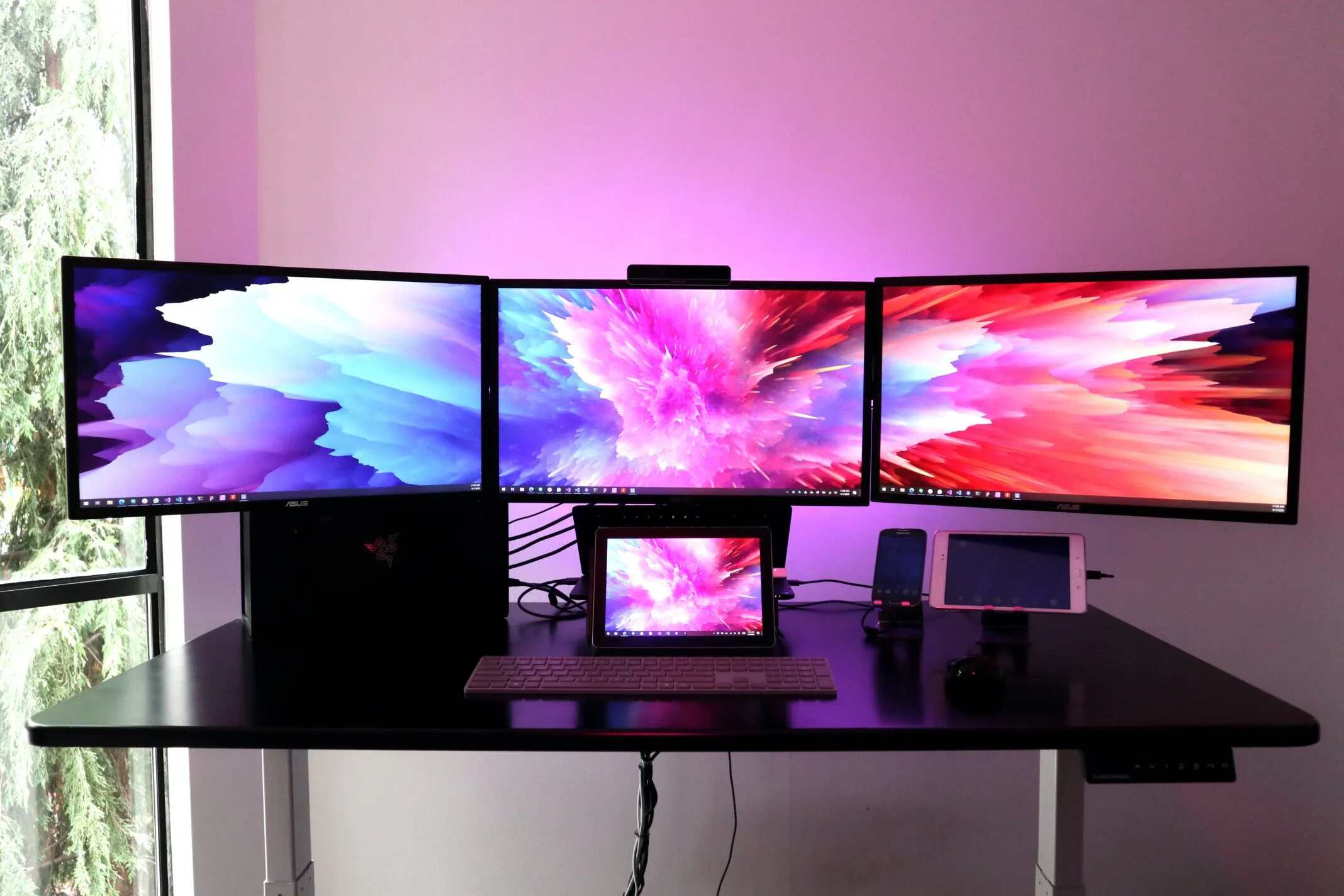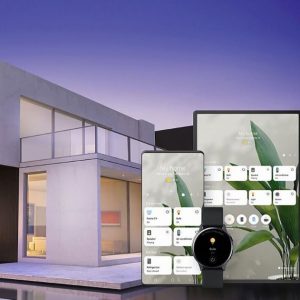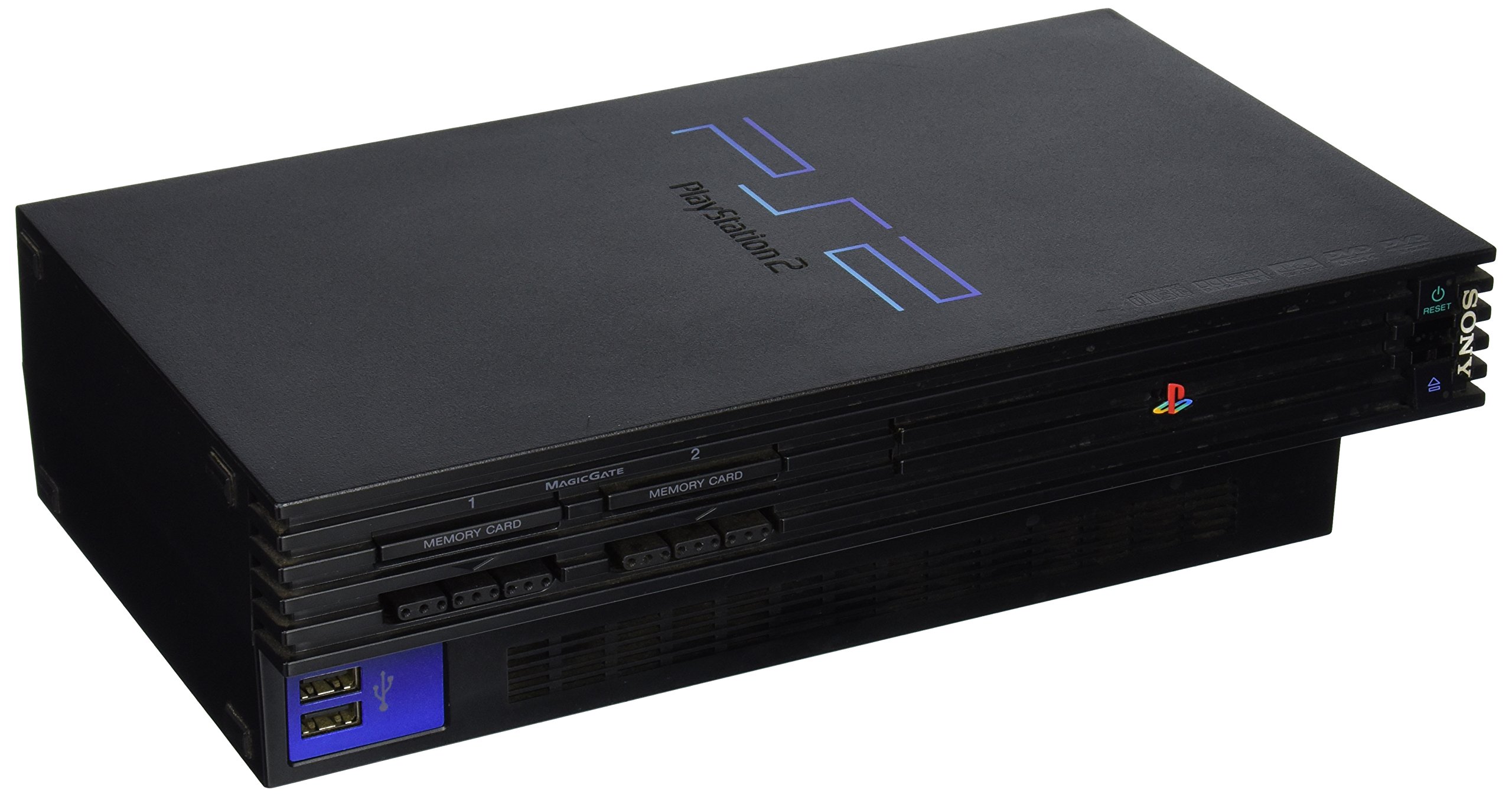

Introduction
Gaming monitors have become an essential component for gamers of all levels. Whether you’re a hardcore gamer or just enjoy playing casually, the right gaming monitor can enhance your gaming experience by delivering stunning visuals and smooth gameplay. With the myriad of options available in the market, it can be overwhelming to choose the perfect gaming monitor that meets your specific needs.
In this article, we will explore the key factors to consider when buying a gaming monitor. From resolution and refresh rate to response time and panel type, we will guide you through the essential features to help you make an informed decision. By understanding these aspects, you can find a gaming monitor that not only complements your gaming style but also fits within your budget.
Before diving into the intricate details, it’s worth noting that a gaming monitor serves as the gateway between you and the virtual world. It is responsible for delivering the graphics, colors, and fluid motion that immerse you in your favorite games. Therefore, investing in a high-quality gaming monitor is crucial if you want to fully enjoy the latest gaming titles and experience optimal performance.
Without further ado, let’s delve into the essential factors to consider when purchasing a gaming monitor that will take your gaming adventures to the next level!
Resolution
The resolution of a gaming monitor refers to the number of pixels displayed on the screen. It greatly impacts the level of detail and clarity you can experience in your games. When it comes to resolution, the higher the better, as it allows for sharper visuals and more immersive gameplay.
The most common resolutions for gaming monitors are Full HD (1920×1080), Quad HD (2560×1440), and Ultra HD or 4K (3840×2160). Full HD monitors provide a decent gaming experience for casual gamers and those on a budget. Quad HD offers a significant upgrade in visual quality and is ideal for gamers who want crisp details without investing in the high-end 4K monitors. Ultra HD or 4K monitors provide the highest level of detail, offering stunning visuals and a truly immersive gaming experience, especially for AAA titles and visually demanding games.
It’s important to consider your system’s capabilities when choosing the resolution. While a higher resolution may offer better visuals, it also requires more powerful hardware to ensure smooth performance. If your PC or console cannot handle the demands of a higher resolution, you may not fully benefit from it.
When deciding on the resolution, also consider the size of the monitor. If you opt for a larger screen size, such as 27 inches or above, it is advisable to go for a higher resolution to avoid pixelation and maintain a sharp image quality.
Choosing the right resolution for your gaming monitor ultimately depends on your preferences, the games you play, and your budget. It’s important to strike a balance between the level of detail you want and the system requirements you can meet.
Refresh Rate
The refresh rate of a gaming monitor is the number of times it updates the image on the screen per second, measured in Hertz (Hz). It determines how smoothly the visuals are displayed and can greatly affect your gaming experience.
A higher refresh rate results in smoother motion and reduces motion blur, making fast-paced games or action sequences appear more fluid and responsive. The standard refresh rate for most monitors is 60Hz, which provides a decent gaming experience for casual gamers. However, for more competitive gaming or if you want a smoother visual experience, consider opting for a higher refresh rate monitor, such as 144Hz, 240Hz, or even 360Hz.
Gaming monitors with higher refresh rates allow for quicker image updates, providing a more seamless and enjoyable gaming experience. They are particularly beneficial for games that involve rapid movements, such as first-person shooters or racing games, as they provide a competitive edge by eliminating motion blur and input lag.
It’s worth noting that to fully benefit from a higher refresh rate monitor, your computer’s graphics card must be able to produce enough frames per second (FPS) to match the refresh rate. For example, if you have a 144Hz monitor, your system ideally needs to achieve at least 144 FPS to fully utilize the monitor’s capabilities. If your system cannot consistently reach the required FPS, you may not notice a significant difference between a lower and higher refresh rate monitor.
Ultimately, the refresh rate you choose depends on your gaming preferences and the capabilities of your gaming setup. If you play fast-paced, competitive games and have a powerful gaming rig, investing in a high refresh rate monitor can greatly enhance your gaming experience and provide a significant advantage in gameplay. However, if you mainly play slower-paced games or have budget constraints, a standard 60Hz monitor may suffice.
Response Time
The response time of a gaming monitor refers to the time it takes for a pixel to change from one color to another. It is typically measured in milliseconds (ms) and is an important factor to consider when choosing a gaming monitor.
A low response time is crucial for gamers, as it determines how fast the monitor can keep up with the action happening on screen. A faster response time means less motion blur and smoother visuals during fast-paced games, resulting in a more immersive gaming experience.
The ideal response time for gaming monitors is 1ms or 2ms. Monitors with higher response times, such as 5ms or 8ms, may introduce noticeable motion blur, especially in fast-moving scenes. However, it’s important to note that the difference between 1ms and 5ms response time may not be easily perceptible to everyone, and many gamers can still enjoy smooth gameplay with a slightly higher response time.
It’s worth considering that the advertised response time of a monitor may not always reflect real-world performance. Manufacturers often use different measurement methods, such as gray-to-gray (GtG), to determine response time, which may not accurately represent real-world motion handling.
Another factor to consider is the type of panel used in the monitor. Different panel technologies, such as TN (Twisted Nematic), IPS (In-Plane Switching), and VA (Vertical Alignment), have different response time capabilities. TN panels typically offer the fastest response times, making them popular among competitive gamers. IPS panels have slightly slower response times but provide better color reproduction and wider viewing angles. VA panels offer deeper blacks and better contrast but may have slightly higher response times.
When choosing a gaming monitor based on response time, it’s important to find a balance between speed and visual quality. Gamers who prioritize fast-paced competitive gameplay may lean towards monitors with lower response times, while those who value visual fidelity may opt for monitors with slightly higher response times but better color accuracy.
Overall, response time is an important consideration when purchasing a gaming monitor, especially if you play fast-paced games. Look for monitors with low response times and take into account the panel technology to find the right balance between speed and visual quality that suits your gaming needs.
Panel Type
The panel type of a gaming monitor plays a significant role in determining its visual performance, color reproduction, viewing angles, and overall image quality. There are three primary panel technologies commonly used in gaming monitors: TN (Twisted Nematic), IPS (In-Plane Switching), and VA (Vertical Alignment).
TN panels offer fast response times, making them popular among competitive gamers. They also tend to be more affordable compared to other panel types. However, TN panels typically exhibit narrower viewing angles and relatively poorer color accuracy and contrast compared to IPS and VA panels.
IPS panels, on the other hand, provide superior color accuracy, wider viewing angles, and excellent color reproduction. This makes them ideal for gamers who prioritize accurate and vibrant visuals over lightning-fast response times. IPS panels are especially well-suited for graphic-intensive games and tasks that require color precision, such as photo editing or content creation. However, they often have slightly slower response times compared to TN panels.
VA panels strike a balance between TN and IPS panels. They offer better contrast ratios and deeper blacks, providing a more immersive gaming experience, especially in dark or atmospheric games. VA panels also deliver better viewing angles compared to TN panels but may fall slightly behind IPS panels in terms of color reproduction and response times.
When choosing a panel type, consider your specific gaming needs and preferences. If you prioritize fast-paced gaming and competitive play, TN panels may be your best bet. However, if you value accurate colors, wider viewing angles, and a more immersive visual experience, IPS or VA panels would be a better fit.
It’s worth noting that recent advancements have narrowed the gap between different panel types, with manufacturers continually improving response times, color accuracies, and viewing angles in their displays. Therefore, it is recommended to research and read reviews about specific models and their panel performance to ensure they meet your requirements.
Ultimately, the choice of panel type depends on your personal preferences, the type of games you play, and the visual experience you seek. Consider weighing the pros and cons of each panel type to find the one that best suits your gaming needs.
Screen Size
The screen size of a gaming monitor is an important consideration that greatly impacts your gaming experience. It determines the amount of visual real estate available, the level of immersion, and the overall viewing comfort during gameplay.
Gaming monitors come in a wide range of screen sizes, typically measured diagonally in inches. The most common sizes range from 24 inches to 32 inches, although larger options are available for those seeking a more expansive display.
When it comes to screen size, it’s essential to strike a balance between immersion and practicality. A larger screen allows for a more immersive gaming experience, as it fills your field of vision and provides a larger viewing area for games, especially those with detailed environments or expansive landscapes.
However, it’s worth considering the distance between you and the monitor when determining the optimal screen size. Sitting too close to a large monitor can cause eye strain or make it difficult to view the entire screen comfortably. Likewise, sitting too far away from a small monitor may diminish the immersive effect and make it harder to discern fine details.
Another factor to consider is the resolution of the monitor. Higher resolutions, such as Quad HD or 4K, work best on larger screens, as they provide more pixel density and sharper visuals. On smaller screens, these higher resolutions may result in smaller text or icons, making them harder to read or interact with.
It’s also important to consider the available desk space or gaming setup you have. While a large monitor can be visually stunning, it may not be practical if it doesn’t fit comfortably on your desk or within your gaming area.
Ultimately, the ideal screen size for your gaming monitor depends on your personal preferences, the available space, viewing distance, and the level of immersion you desire. Consider your gaming environment, desk setup, and seating distance to determine the most suitable screen size that offers an optimal balance of immersion and practicality for your gaming needs.
Connectivity Options
The connectivity options available on a gaming monitor are essential to consider as they determine how you can connect your gaming devices and peripherals to the monitor. Having the right connectivity options ensures seamless compatibility and enhances your overall gaming experience.
One of the most crucial connectivity options is the availability of an HDMI (High-Definition Multimedia Interface) port. HDMI is the standard connection used to connect gaming consoles, PCs, and other devices to a monitor. It supports high-definition video and audio signals, making it ideal for gaming. Ensure that the gaming monitor you choose has at least one HDMI port, preferably the latest version to support higher resolutions and refresh rates.
In addition to HDMI, consider other connectivity options that may be important to you. DisplayPort is another common connection interface found on gaming monitors. It offers similar functionality to HDMI, with the advantage of supporting higher refresh rates and resolutions. If you have a high-end gaming rig or plan to use multi-monitor setups, having a DisplayPort is beneficial.
Another connectivity option to consider is USB ports. USB ports on a gaming monitor allow you to connect various peripherals, such as gaming keyboards, mice, or even charge your devices. These ports provide convenience by reducing cable clutter and keeping your gaming area organized. It’s recommended to have at least a few USB ports available on your gaming monitor for easy access.
Other connectivity options to consider include headphone jacks for audio output, microphone inputs for voice communication, and built-in speakers for those who prefer not to use external speakers or headphones.
When selecting a gaming monitor, ensure that it provides the necessary connectivity options to accommodate your gaming setup and devices. Consider the devices you plan to connect, the number and type of ports you require, and the convenience offered by additional features like USB ports or audio outputs. Having the right connectivity options will enhance your gaming experience and ensure seamless compatibility with your gaming devices.
Adaptive Sync Technology
Adaptive Sync technology is a crucial feature to consider when purchasing a gaming monitor. It helps in eliminating screen tearing, stuttering, and provides a smoother and more enjoyable gaming experience.
Screen tearing occurs when the monitor’s refresh rate and the frames per second (FPS) of the graphics card are not in sync. This results in a visible split between two frames, causing a distracting and unpleasant visual artifact. Adaptive Sync technology, such as AMD FreeSync or NVIDIA G-Sync, dynamically syncs the monitor’s refresh rate with the FPS of the graphics card, eliminating screen tearing.
By dynamically adjusting the refresh rate, adaptive sync technology ensures that every frame is displayed as it should be, resulting in smoother gameplay. This is particularly beneficial in fast-paced games, where quick movements and rapid changes in scene can lead to noticeable tearing without adaptive sync.
It’s important to note that AMD FreeSync is compatible with AMD graphics cards, while NVIDIA G-Sync requires an NVIDIA graphics card. However, there are now monitors available that support both technologies, referred to as G-Sync Compatible or FreeSync Premium, offering wider compatibility options.
When choosing a gaming monitor, consider whether adaptive sync technology is a priority for you. If you have an AMD graphics card, opting for a monitor with AMD FreeSync support would be ideal. Similarly, if you have an NVIDIA graphics card, look for a monitor with G-Sync compatibility. This will ensure that you can utilize the benefits of adaptive sync technology to eliminate screen tearing and enjoy a smoother gaming experience.
It’s worth noting that not all games support adaptive sync technology, so it’s essential to check the compatibility with your favorite games. However, as the technology becomes more widespread, an increasing number of games are incorporating support for adaptive sync, allowing for a seamless and tear-free gaming experience.
Adaptive sync technology is a game-changer for gamers, providing a smoother gaming experience by eliminating screen tearing. If you value a tear-free and immersive gaming experience, be sure to consider a gaming monitor with supported adaptive sync technology for optimal performance.
Aspect Ratio
The aspect ratio of a gaming monitor refers to the proportional relationship between its width and height. It determines the shape and dimensions of the screen, which can greatly impact your gaming experience.
The most common aspect ratios for gaming monitors are 16:9 and 21:9. A 16:9 aspect ratio is widely used and considered the standard for most gaming setups. It offers a wide field of view and is compatible with most games and multimedia content. This aspect ratio provides a good balance between immersion and practicality.
On the other hand, a 21:9 aspect ratio, also known as ultrawide, offers a wider horizontal field of view, resulting in a more immersive gaming experience. Ultrawide monitors provide a broader perspective in games, allowing you to see more of the environment, enhancing realism and immersion. They are particularly beneficial for games with expansive landscapes, racing games, and simulations.
However, it’s important to consider the compatibility of games and other content with ultrawide monitors. While many modern games support ultrawide resolutions, older games or certain applications may not fully utilize the wider aspect ratio, resulting in black bars on the sides or stretched images. Additionally, some competitive multiplayer games may limit the field of view to maintain a level playing field, reducing the advantage of an ultrawide monitor.
Ultimately, the choice of aspect ratio depends on your gaming preferences and the type of games you play. If you value a wider and more immersive experience, an ultrawide 21:9 monitor may be the right choice. However, if you prefer compatibility with a wider range of games and content, a standard 16:9 aspect ratio is a safe and versatile option.
It’s worth mentioning that there are other aspect ratios available as well, such as 16:10 or 32:9, catering to specific needs and preferences. These aspect ratios offer different trade-offs between immersion, compatibility, and practicality. Consider your gaming style, the types of games you play, and your personal preference when selecting the aspect ratio that best suits your needs.
Price
The price of a gaming monitor is an important consideration when making a purchase decision. Gaming monitors come in a wide range of prices, catering to different budgets, needs, and preferences.
It’s essential to determine your budget before starting your search for a gaming monitor. Knowing how much you are willing to spend will help you narrow down your options and prioritize the features that matter most to you.
Generally, higher-priced gaming monitors offer advanced features such as higher resolutions, faster refresh rates, lower response times, and better panel technologies. These monitors are often targeted towards gamers who demand high-performance and the latest cutting-edge technologies.
However, it’s important to note that a higher price tag doesn’t always equate to a better gaming experience. Understanding your gaming needs and how you plan to use the monitor can help you find a monitor that strikes a balance between performance and affordability.
If you’re on a tight budget, there are plenty of budget-friendly gaming monitors available that still offer decent performance and features. These monitors may not have all the bells and whistles of their higher-priced counterparts but can provide an enjoyable gaming experience without breaking the bank.
When considering the price, it’s also worth researching and reading reviews to ensure that the monitor provides good value for the price. Sometimes, a slightly more expensive monitor with better features or build quality may be a wise investment in the long run.
Ultimately, the right price for a gaming monitor depends on your budget and your specific requirements. It’s recommended to compare prices, features, and reviews to find a gaming monitor that offers the best balance between performance, quality, and affordability for your gaming needs.
Conclusion
Choosing the right gaming monitor is essential to elevate your gaming experience to the next level. By considering factors such as resolution, refresh rate, response time, panel type, screen size, connectivity options, adaptive sync technology, aspect ratio, and price, you can make an informed decision that aligns with your gaming preferences and budget.
Resolution impacts the level of detail and clarity, while the refresh rate and response time determine how smoothly the visuals are displayed. The panel type affects color accuracy, viewing angles, and overall image quality. Screen size contributes to the level of immersion and comfort, while connectivity options ensure seamless compatibility with gaming devices and peripherals.
Adaptive sync technology eliminates screen tearing, providing a smoother gaming experience. The aspect ratio offers a choice between immersion and compatibility. Lastly, price plays a significant role in determining the features and performance you can expect from a gaming monitor.
When making a decision, it’s important to find a balance between your gaming preferences, budget, and the capabilities of your gaming setup. Consider the types of games you play, the graphics card you have, and the level of performance you desire to choose the monitor that best suits your needs.
Remember, a gaming monitor serves as a portal into your gaming adventure, delivering stunning visuals, smooth gameplay, and providing you with an immersive experience. By investing in the right gaming monitor, you can enhance your enjoyment and fully embrace the virtual world of gaming.
Now that you are armed with the knowledge to make an informed decision, go forth and find the perfect gaming monitor that will bring your gaming sessions to life!









![Setting Up Dual Monitors With Your Laptop [Easy Guide]](https://robots.net/wp-content/uploads/2022/07/workstation-405768_1920-300x202.jpg)















